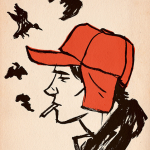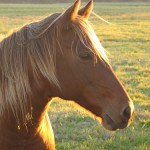Every week in The Kiddy Pool, Erin Newcomb confronts one of many issues that parents must deal with related to popular culture.
It’s that dismissal of children, that nostalgic lens for regarding childhood as a state free from the weight of real fears or anxieties, that bothers me.
March 2nd marked the 109th anniversary of Dr. Seuss’ birth (he died in 1991); this past weekend, readers all over the country celebrated with “Read across America,” an event that honors the beloved children’s author and his commitment to early childhood literacy. Still widely read today as classic picture books, Dr. Seuss’ work plays with nonsense words, tongue twisters, and delightful imaginary creatures. Like so many children’s books, it’s easy to dismiss them as frivolously fun, superficial literary fare until readers can “advance” to more meaningful texts. Yet the themes that run throughout Dr. Seuss’ books are not childish in the sense that they are immature; they are childlike in that they deal with fundamentally human emotions and ideas, sometimes sinister, ever hopeful, redemptive. They are, without qualification of genre, great books.
Take The Cat in the Hat and its sequel The Cat in the Hat Comes Back, two books featuring Dr. Seuss’ best-known character. In each story, the children are alone, their mother referenced in absentia (and, tellingly, only appearing as a foot-in-the-door at the end of the first book). Enter the Cat. He brings mischief, and the children worry throughout the books. When the Cat magically restores their home at the end, he disappears, leaving the children to ponder the nerve-wracking, destructive visitor who leaves without a trace. The Cat in the Hat ends with the faceless mother asking about their day, and the children reflect “Should we tell her about it?/Now, what SHOULD we do?/Well…/What would YOU do/If your mother asked YOU?” Those last lines always make me nervous, and sometimes I project that onto my daughter. “You’d tell me if the Cat were here while I was at work, right?” She eyes me suspiciously. Surely at least her father would mention it, but the Cat seems to appear only to children and seems to remain a secret from adults. It’s almost like he embodies the loneliness, the anxiety, and the rampant free-wheeling creativity of children when adults actually leave them alone. Do we do that anymore? Even metaphorically?
Consider some of Dr. Seuss’s other famous characters. There’s Horton, who rescues an entire population from cruelty and destruction, only by undergoing personal torment and a nearly-impossible quest. He justifies his exertions with the line “A person’s a person, no matter how small.” Horton is a hero, a champion of the vulnerable, the downtrodden. There’s the Grinch, who lies to Cindy Lou Who (I admit, she’s top 5 in my favorite, all-time literary characters) and abuses his dog Max and still, like the Scrooge who preceded him by a century, concludes his story with redemption and reintegration into the community. And it’s little Cindy Lou Who (who was, after all, no more than 2) who sits beside him at the feast, welcoming him in spite of his treacherous history. These are kids’ stories, sure, but they grapple with the same big concepts we seldom attribute to children or to childhood: forgiveness and bravery, righteousness and endurance. It’s almost as if, culturally, we struggle to remember that children are vulnerable, yes, but also strong, perhaps with a keener, less muddled moral compass than many of us grownups.
It’s not surprising to me that Dr. Seuss wrote so many of his stories (like The Sneetches) in response to prejudices he observed during and after World War II. Or that he composed a number of war propaganda illustrations as well, fighting against isolationism when he felt morally compelled to enter the encroaching conflict. Not all of Dr. Seuss’ work touches on these heavy themes, of course, and to claim otherwise would detract from the delightfulness of his corpus. I wonder though, as I watch the PBS program based on the Cat, about the ways that we’ve altered that feline character to make us feel more comfortable. It’s a good children’s program—interesting, educational, science-focused. The Cat remains hidden from the parents, but in each episode, the children specifically ask permission to go someplace with the Cat, and each time, the mothers (I’ve never seen fathers portrayed on the show), laughingly permit the excursion. The implication is that those kids are up to their nonsense games again, “just” playing pretend, as if we can’t travel via imagination. It’s that dismissal of children, that nostalgic lens for regarding childhood as a state free from the weight of real fears or anxieties, that bothers me. I think our children have things to say. Things that are courageous and true. Things that grownups need to hear. I think that’s part of the message of Dr. Seuss, and I think it’s what Jesus meant, too, when he called the children to Himself. Let’s not hinder them.












